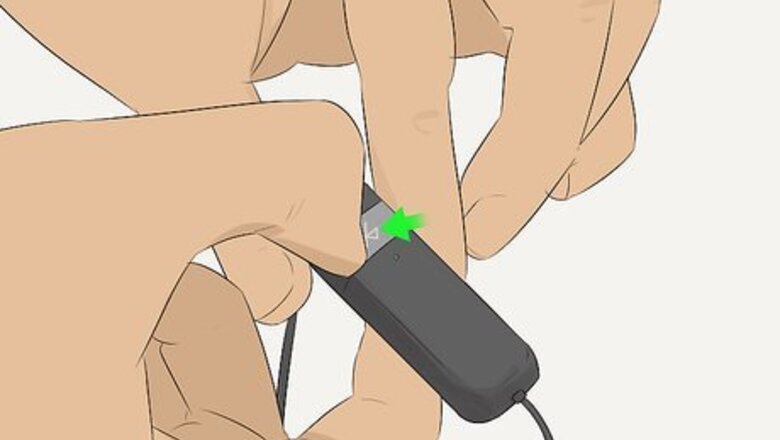
views
Windows 10
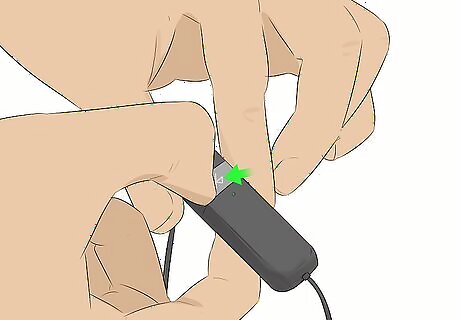
Turn on the Bluetooth device. If you want to connect a Bluetooth headset, speakers, or some other accessory to your Windows 10 PC, begin by turning it on.Note: The weakest variety of Bluetooth (Bluetooth 1.0) can connect to devices up to 33 feet away. Bluetooth 2.0 increases that range to 100 feet. Bluetooth 3.0 still has a 100-foot limit, but Bluetooth 4.0 can work with up to 200 feet of distance. If your devices are Bluetooth 5, you'll have up to 800 feet of leeway. If your computer doesn't support Bluetooth, you can add support using a USB Bluetooth adapter. Just connect the adapter to the computer and follow the on-screen instructions to install it.
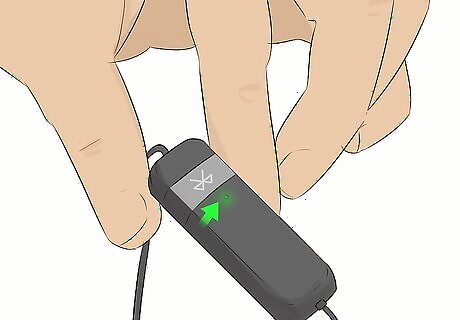
Make the Bluetooth accessory discoverable. When a device is "discoverable," your PC will be able to find it and make a connection. Usually turning on a device will immediately put it into discovery mode. Sometimes you'll have to press a button (or combination of buttons) to make it discoverable. You'll usually see a blinking LED indicator somewhere on the device once it's discoverable.

Click the Action Center icon. It's the squared-off chat bubble icon to the right of the clock in the taskbar.
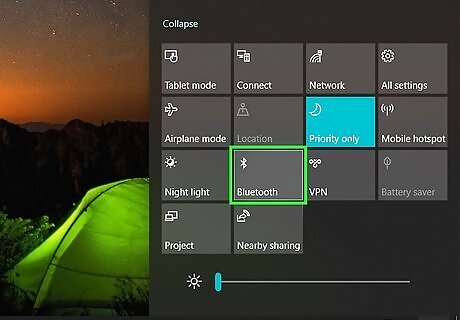
Click the Bluetooth Mac Bluetooth icon to toggle it on. It looks like a sideways bowtie. When Bluetooth is turned on, the tile will turn a different color and either say "Not connected" or display a device name. When Bluetooth is off, the tile will just say "Bluetooth" and be gray. If you've already paired the Bluetooth device with your PC it should now connect automatically.
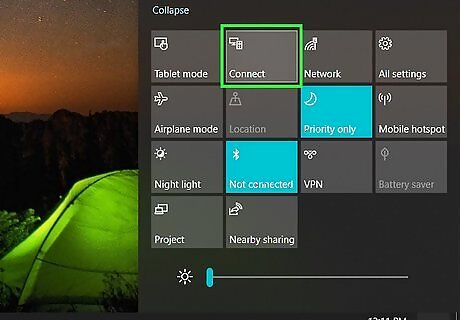
Click the Connect tile. It should be right below the Bluetooth icon. Look for the computer monitor icon with an overlapping phone or tablet. Your PC will now scan for available Bluetooth devices in range.
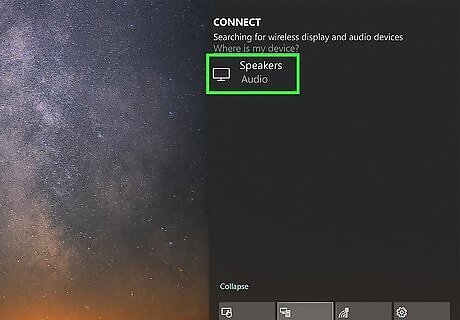
Click your Bluetooth device. The device may have a descriptive name that makes it easy to identify, but sometimes it'll be a more obscure set of letters and/or numbers. You can find out the name for sure by checking the Bluetooth device's manual. This will pair the device with your PC. Sometimes you'll have to enter a code that appears on the device. Follow any on-screen instructions that appear to continue pairing. If the device doesn't appear, try powering it off and on again.
Windows 8.1
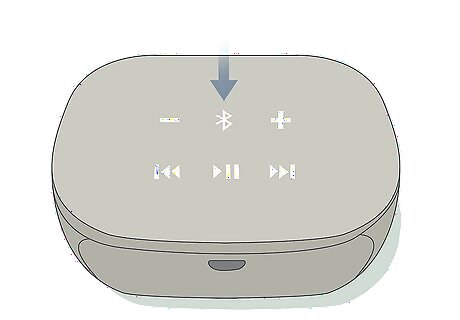
Turn on the Bluetooth device. If you want to connect a Bluetooth headset, speakers, or some other accessory to your Windows 10 PC, begin by turning it on.Tip: If your computer doesn't support Bluetooth, you can add support using a USB Bluetooth adapter. Just connect the adapter to the computer and follow the on-screen instructions to install it. The weakest variety of Bluetooth (Bluetooth 1.0) can connect to devices up to 33 feet away. Bluetooth 2.0 increases that range to 100 feet. Bluetooth 3.0 still has a 100-foot limit, but Bluetooth 4.0 can work with up to 200 feet of distance. If your devices are Bluetooth 5, you'll have up to 800 feet of leeway.
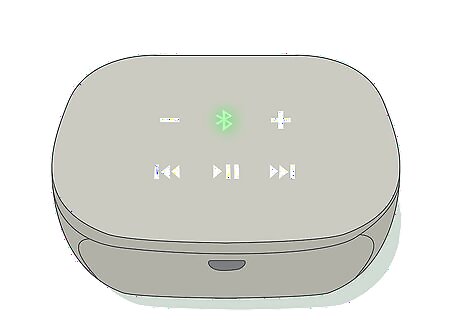
Make the Bluetooth accessory discoverable. When a device is "discoverable," your PC will be able to find it and make a connection. Usually turning on a device will immediately put it into discovery mode. Sometimes you'll have to press a button (or combination of buttons) to make it discoverable. You'll usually see a blinking LED indicator somewhere on the device once it's discoverable.
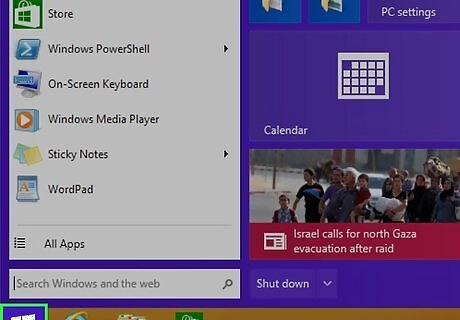
Click the Start Windows Start button. It's usually at the bottom-left or top-left corner of the home screen.
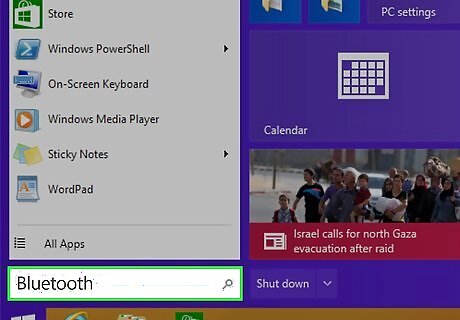
Type Bluetooth into the search bar.
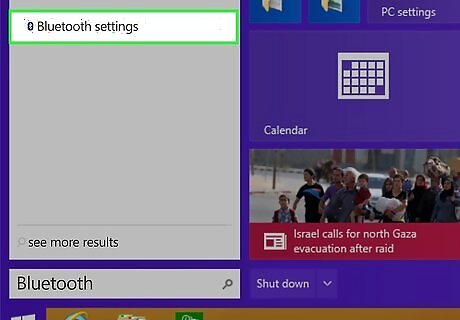
Click Bluetooth settings in the search results.
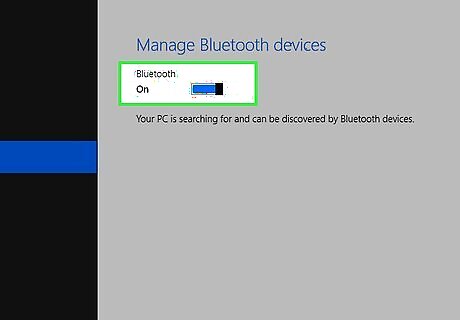
Slide the "Bluetooth" slider to the On (blue) position. As long as this switch is blue, your PC is discoverable and can connect to other Bluetooth devices. Windows will now scan for discoverable Bluetooth devices and display them in a list.
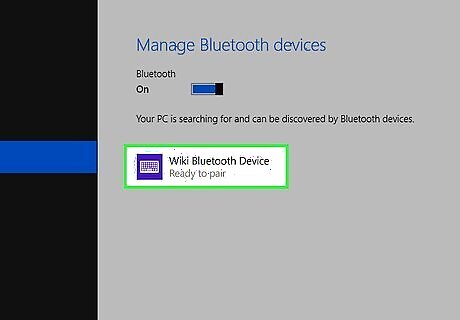
Click the Bluetooth device. The device may have a descriptive name that makes it easy to identify, but sometimes it'll be a more obscure set of letters and/or numbers. You can find out the name for sure by checking the Bluetooth device's manual.
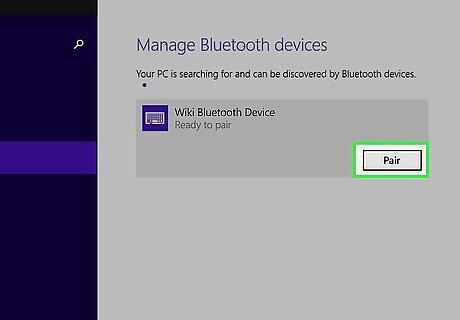
Click Pair. This will pair the Bluetooth device with your PC. Sometimes you'll have to enter a code that appears on the device. Follow any on-screen instructions that appear to continue pairing. If the device doesn't appear, try powering it off and on again.
Windows 7 and Vista
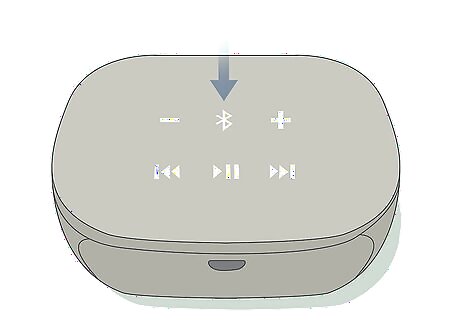
Turn on the Bluetooth device. If you want to connect a Bluetooth headset, speakers, or some other accessory to your Windows 10 PC, begin by turning it on. The weakest variety of Bluetooth (Bluetooth 1.0) can connect to devices up to 33 feet away. Bluetooth 2.0 increases that range to 100 feet. Bluetooth 3.0 still has a 100-foot limit, but Bluetooth 4.0 can work with up to 200 feet of distance. If your devices are Bluetooth 5, you'll have up to 800 feet of leeway. If your computer doesn't support Bluetooth, you can add support using a USB Bluetooth adapter. Just connect the adapter to the computer and follow the on-screen instructions to install it.
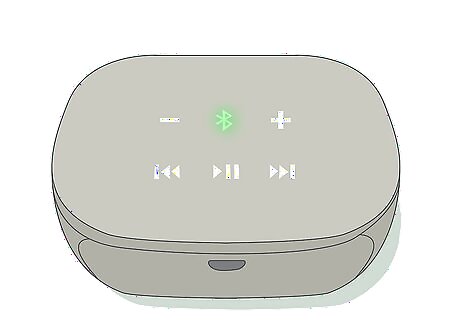
Make the Bluetooth accessory discoverable. When a device is "discoverable," your PC will be able to find it and make a connection. Usually turning on a device will immediately put it into discovery mode. Sometimes you'll have to press a button (or combination of buttons) to make it discoverable. You'll usually see a blinking LED indicator somewhere on the device once it's discoverable.
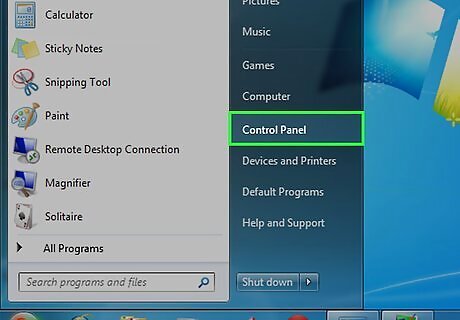
Open your PC's Control Panel. You can do so by clicking the Start menu and selecting Control Panel.
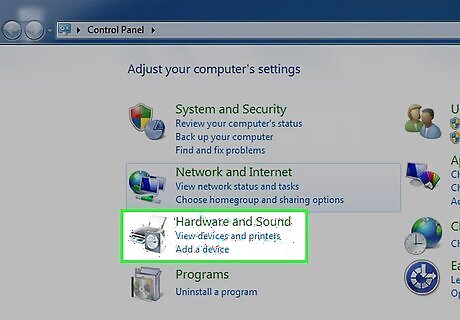
Click Add a device under "Hardware and Sound." It's on the right side of the Control Panel window. This opens the Add a Device wizard, which will automatically attempt to search for available Bluetooth devices.Note: If you don't see this option, return to the Start menu and select Devices and Printers and click Add a device there.
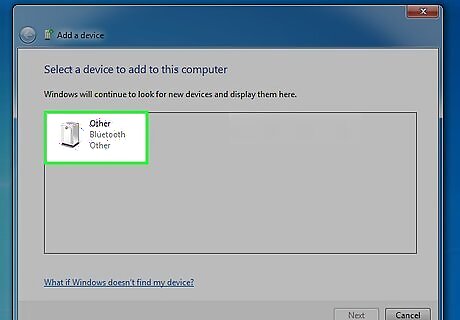
Click the device and select Next. The device may have a descriptive name that makes it easy to identify, but sometimes it'll be a more obscure set of letters and/or numbers. You can find out the name for sure by checking the Bluetooth device's manual. This will pair the device with your PC. Sometimes you'll have to enter a code that appears on the device. Follow any on-screen instructions that appear to continue pairing. If the device doesn't appear, try powering it off and on again.




















Comments
0 comment